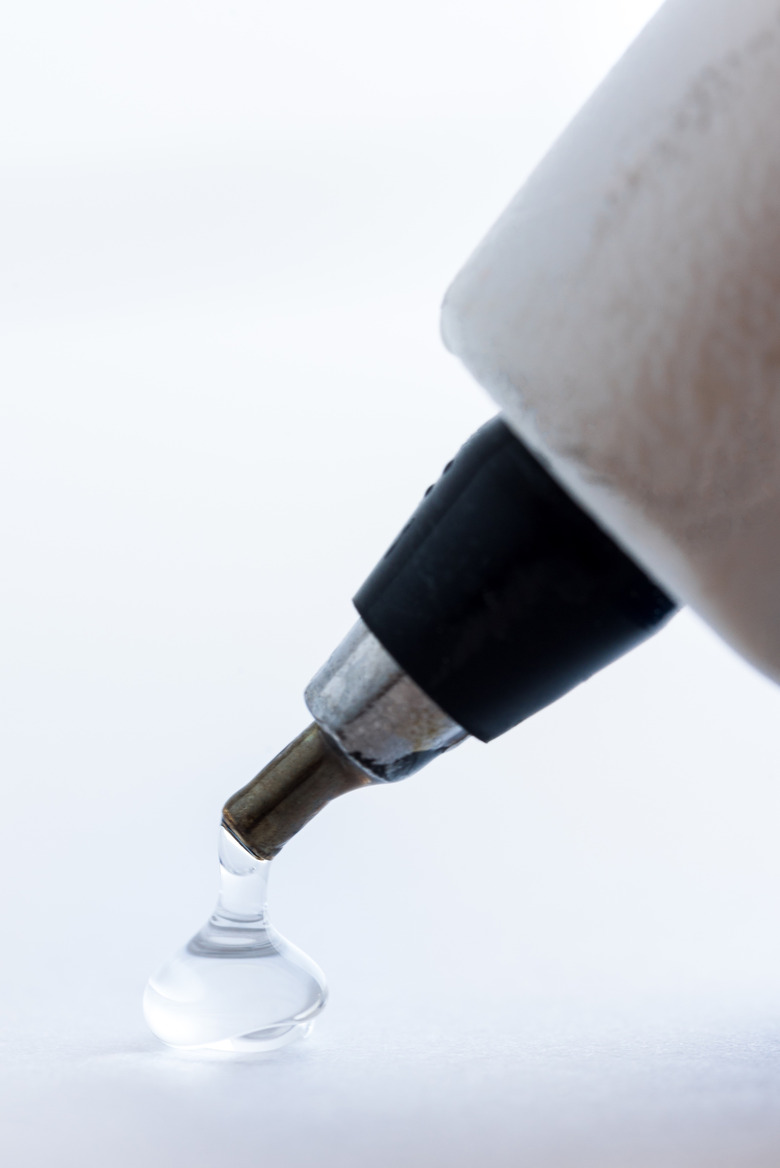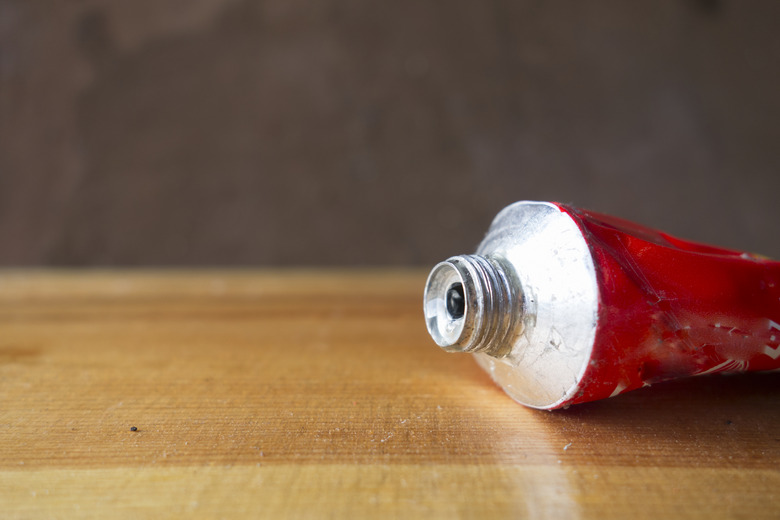How To Remove Dried Glue From A Mirror
Mistakes happen, especially when it comes to working with glues. Whether you've used a little too much glue making a mosaic frame around a mirror or the kids' craft project went a little out of control, don't worry: that hardened glue can still be cleaned off the mirror glass. In many cases, common household materials such as nail polish remover, vegetable oil and a razor blade can remove stubborn bits of dried glue stuck on the mirror. The technique you use to remove the dried glue will depend on the type of glue you're dealing with.
Removing Water-Based Glues
Removing Water-Based Glues
Common household glues, such as school, craft and many wood glues, are water-based, which means they're also easy to clean up with water, so long as the glue hasn't hardened. These are also sometimes called PVA (polyvinyl acetate), glues. Many household substances help soften dried PVA glue enough to remove it from glass. Apply a water-displacing lubricant, vegetable oil, baby oil or a citrus-based "goo" remover to the glue spot with a paper towel, rubbing the glue to help loosen it. Continue until the residue dissolves completely, then clean the mirror with white vinegar or a glass cleaner. This method also works really well with sticker and tape residues.
Removing Cyanoacrylate Glues
Removing Cyanoacrylate Glues
Cyanoacrylates are glues of the "super" and "crazy" varieties, designed to create a strong bond almost instantly. The downside: since cyanoacrylate glue dries incredibly fast, there's very little time to remove errant drips. Water cleanup also doesn't work with this type of glue—in fact, cyanoacrylate glue requires moisture to adhere properly.
Acetone, a common ingredient in many nail polish removers, will loosen this glue's bond to glass. It may take several tries and a little friction from a non-abrasive scraping or scrubbing device to remove the glue residue. A razor blade works for stubborn glue when acetone alone doesn't work.
Things Needed
-
Paper towels and cotton swabs (optional)
-
Acetone or acetone-based nail polish remover
-
Rubber gloves
-
Non-abrasive scraping tools
-
Razor blade
Step 1
Open the windows and turn on a ceiling van or ventilation fan, if possible, to help cut down on fumes. If working with a portable mirror, take the mirror outside or to an area with excellent ventilation.
Step 2
Pour a small amount of acetone or acetone-based nail polish remover onto a folded paper towel while wearing rubber gloves. If cleaning only a small amount of cyanoacrylate glue off the mirror, a cotton swab may suffice.
Step 3
Apply the acetone-soaked paper or swab to the hardened glue on the mirror. Rub the spot with the paper or swab. If the mirror can be moved, position it so the glass is horizontal for best results, allowing the acetone to sit in place for a minute or so. Otherwise, wipe up any dripping acetone immediately, as it may potentially damage the finish on some mirror frames.
Step 4
Pick at the glue area with your finger while wearing rubber gloves. If it seems softer, continue picking at it. Rub the glue with a plastic knife or plastic-based scrub pad if it proves difficult to remove by hand alone.
Step 5
Wipe away any loosened glue residue to inspect the affected glass. Apply more acetone and scrape again if any glue remains.
Step 6
Gently scrape an extremely stubborn glue spot with a razor blade, such as the type used in some blade-based scrapers. Exercise extreme caution by working the blade at a slight angle from the glass; the close to parallel, the better. This helps prevent scratching the glass.
Warning
Avoid smoking or working near flames when using acetone, as it is extremely flammable.
When Unsure of the Glue Type
When Unsure of the Glue Type
If you aren't sure what dried glue you're dealing with, start first with the simplest cleanup products, such as vinegar, rubbing alcohol or even water, accompanied by a plastic scraper or a razor blade. If those don't work, try a citrus-based sticker-residue removal product or any vegetable oil. Sometimes a little heat from a hair dryer softens the glue enough to scrape it off.
If the glue still won't budge, use acetone and a razor blade, remembering to wear rubber gloves and to work in a well-ventilated area.

